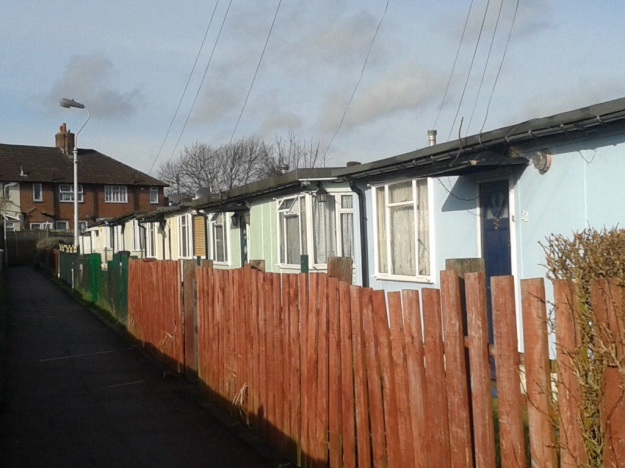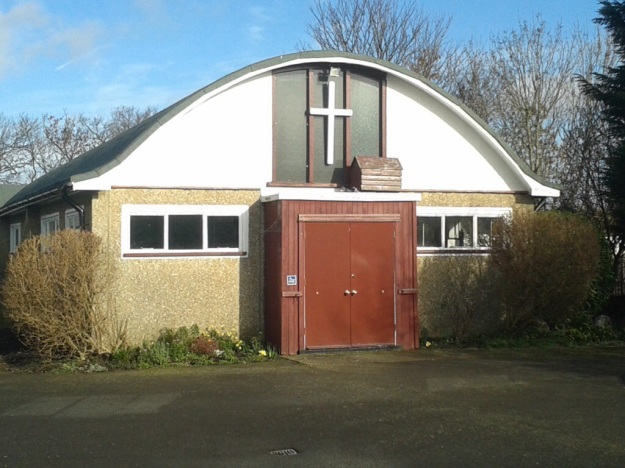The word ‘Corona’ with the suffix of ‘virus’ is currently striking fear into the population of much of the world. In a leafier part of Lee, just off Burnt Ash Hill, there is a street with the name which pre-dates the virus by 140 years and has a much more benign meaning – ‘something suggesting a crown.’ This post looks at some of the history of the street and the neighbouring area.
The land to the east of Burnt Ash Hill in Lee had been probably been in the ownership of the Crown since 1305 as part of the estate of the Eltham Palace which was originally used for hunting. The area has been covered several times by Running Past in relation to two of the farms on the land, Horn Park and Melrose Farms, as well is in passing in relation to pubs linked to John Pound – including The Crown.
As the city expanded with coming of the railways, they arrived in Lee 1866, the Crown began to sell off fields for housing and related activities. One of these sales was land for a brick works on the corner of Burnt Ash Hill and what would become Winn Road – a hundred metres or so down the road from another of Lee’s farms, College Farm. By the 1850s these were, at least partially, owned by John Pound – one of the more significant builders of the Northbrook estate (generally to the west of Burnt Ash Road and Hill) who, as mentioned, also built a quartet of pubs plus a public hall for popular entertainment.
It appears that the brick works was bought by William Winn by 1874 as he had made an application soon after to build what was to become The Crown pub (above) on land which was formerly part of the brick works; in the application he was described as a lighterman and barge owner living at 16 St Stephen’s Road in Bow (1). Despite being married to Elizabeth, he was living there separately as a lodger, something that was still the case in 1881. There was another William Winn who was the bailiff at Burnt Ash Farm in the 1850s and early 1860s of a similar age both from East London; however, unless William Winn had two families, it wasn’t him.
In addition to Corona Road, the roads developed by Winn were the eponymous Winn Road and Guibal Road, along with some houses on the eastern side of Burnt Ash Hill. The early press reports for what was initially called the Burnt Ash Hill Estate are silent on the builder. However, William Baker who was based at 43 Ronver Road in the 1881 census and employing 12 men, was mentioned in the second phase of the development of the street applying for permission to build 5 homes on the north (2) and 5 on the south side of Corona Road. So it is quite possible that he built the entire estate. The houses were substantial ones at the edge of Victorian suburbia – beyond and to the back was rural Kent – as the Ordnance Survey map from 1897 shows.
While the Board of works provided four gas street lights in 1881 (3), it wasn’t until 1889 that they adopted the street and planted lime trees (4); the Board had previously refused to do this, despite complaints from residents, until the builder brought it up to an acceptable standard (5).
It isn’t known how much the houses were sold for but the annual rent was 55 Guineas (£55.25) in 1882, applications could be made at 15 Corona Road which was perhaps being used as a show house for the second phase of houses (6). This house, now numbered 61, is the only remaining one from the 1880s – it is the left of the two above..
Four years later number 5 was for rent and was described as (7) being in a
Rural situation, on high ground with bracing air. Near station, shops and tennis ground. Kent £60
The tennis ground was in the apex of Corona Road and Guibal Road and was probably lost in the 1930s as the southern section of Woodyates Road was developed – it isn’t clear whether this was part of the same development as the northern part of the road which was covered a while ago in Running Past.
So who lived there? A few of the houses were occupied and sold or rented out by the time the census enumerators called in 1881 – in Corona Road itself, only 9 was let or sold, it was home to the Powells – Harry was a senior Civil Servant. Several on the wider Burnt Ash Hill Estate were the temporary homes to those working for the builders. Archibald Harrison who was living in one of the houses on Corona Road ‘Burgoyne Cottage;’ he was described as ‘Builder and Decorator, Master’ in the census – it is possible that he may have built some of the estate, or have been a subcontractor for William Baker.
Next to The Crown, on the corner of Corona Road, at Corona Villa, was Elizabeth Winn the seemingly estranged wife of William, their two adult children including William (born 1859) and three servants. It is worth pausing on the middle one of these, which given the issues that have brought the street name to the fore in 2020, her name seems depressingly apt – Mary Le Fever (see above). This is almost certainly an enumerator mangling the relatively common French name for an ironworker or smith – Lefèvre.
By the time the census enumerators called again in 1891 Corona Road was an established community. Archibald Harrison, the builder and decorator was still there. The rest of the street clearly oozed wealth an included several were living on their own means, with inherited wealth or had retired with a sizeable income; there was an East India Merchant, a Shipowner and broker, an Accountant, a Civil Engineer and a Chemical Manufacturer. Virtually all had servants, most had more than one. Elizabeth Winn was still thereon the corner of the street but marked as a widow, with her daughter Maria who was also a widow.
A decade later Archibald Harrison remained and the ‘class’ of occupant was much the same and included a grain merchant, a confectioner, a hardware merchant, a wholesale bookseller, a couple of living on their own means, a shopkeeper, a retired engineer, a solicitor and an accountant. There was also a Mantle manufacturer, George Smith, perhaps the supplier for Alexander Aitken’s shop next to the Lee Green fire station. Again virtually all had servants.
By 1911, not that much had changed, the households were still relatively small in the large houses, almost all with a servant – amongst the occupants was still George Smith, his neighbours included a retired builder, an artist (living on her own means), another living on own means, a ship broker, a company secretary, a bookseller, and a bank cashier.
The 1939 Register was compiled soon after war broke out. A lot had changed since the 1911 census, only one, quite old household had a servant and the household incomes sources and occupations had changed dramatically – jobs now included a teacher, a municipal accountant, office maintenance worker
Corona Road, more particularly the northern side of it fared badly in World War 2, the London County Council maps show much of that side destroyed or damaged beyond repair (8). By 1948 when the Ordnance Survey surveyors mapped the post war urban landscape, that side of the road was full prefab bungalows, no doubt not dissimilar to those that are still present (spring 2020) on the Excalibur Estate a mile to the west.
From the exterior of the current blocks and houses the prefabs were probably replaced in the late 1950s or early 1960s by Lewisham Council.
On the opposite side of the road while the bomb damage maps had marked the land as less badly damaged, the site seems to have been cleared by 1948. This was presumably for the blocks of Elwyn Gardens, which look as though they may have been built soon after the war.
The housing at the western end of Corona Road is newer, perhaps from the early 1980s, following the demolition on the houses facing Burnt Ash Hill. Like the rest of the estate, where homes have not been sold under right to buy, it is now owned and managed by a housing association L&Q.
Either side of the only house from the 1880s (pictured above), there are a few what look like 1930s houses, but almost certainly date from the 1950s given the wartime destruction.
Notes
- Kentish Mercury – 29 August 1874
- Woolwich Gazette – 02 October 1880
- Kentish Independent – 10 December 1881
- Woolwich Gazette -27 September 1889
- Kentish Independent -13 November 1886
- 22 September 1882 – Kentish Mercury
- 26 February 1886 – London Daily News
- Laurence Ward(2015) ‘The London County Council Bomb Damage Maps 1939-1945’
Credits
- A massive thank you to Pat Chappelle who made the link of Corona Road to the correct William Winn – any subsequent errors are, of course, mine.
- The 1881 census image is via Find My Past as are all the other census, 1939 Register and related references – subscription required
- The Ordnance Survey maps from 1897 and 1948 are via the National Library of Scotland on a Non-Commercial Licence









































